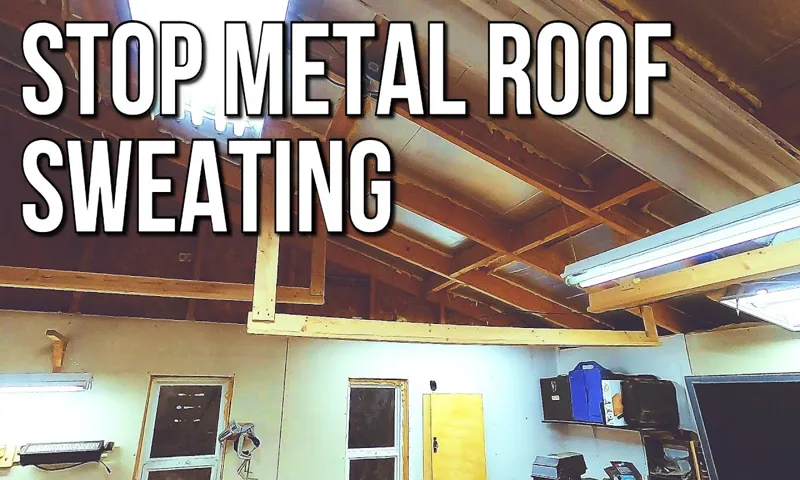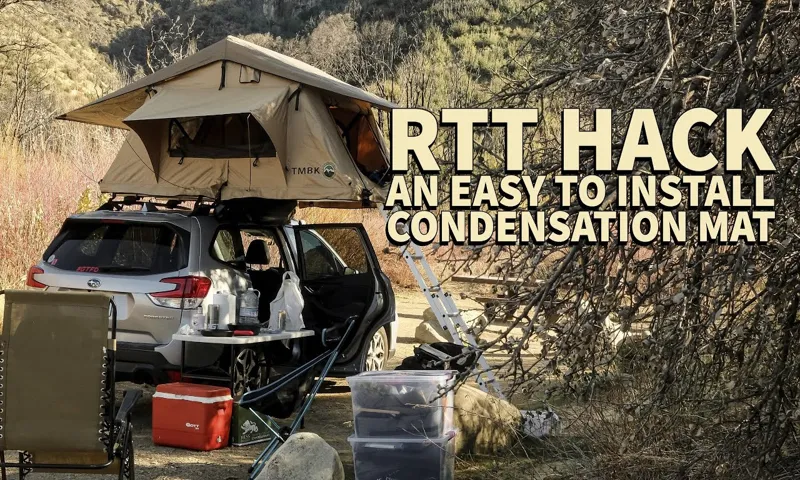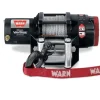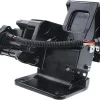Have you ever noticed how on a chilly morning, when you step outside, your breath forms a misty cloud in front of you? That’s condensation in action. And believe it or not, the same process can occur inside your roof top tent. Condensation is a natural occurrence that happens when warm air meets a cold surface.
Inside a roof top tent, where temperatures can fluctuate greatly, condensation can become a common issue. This build-up of moisture can lead to a damp and uncomfortable sleeping environment, not to mention potential damage to your belongings. But fear not, understanding condensation and learning how to address it can greatly improve your camping experience.
In this blog post, we’ll explore the causes of condensation in roof top tents and provide practical tips on how to prevent and manage it. Just like a cup of hot tea on a cold day, condensation in your roof top tent is unavoidable. However, with a few simple adjustments and tricks, you can minimize its impact and keep your camping adventures dry and cozy.
So, let’s dive in and unravel the mysteries of condensation in roof top tents!
Table of Contents
What Causes Condensation in Roof Top Tents
One common issue that rooftop tent owners experience is condensation inside the tent. Condensation occurs when warm, moist air comes into contact with a colder surface, causing the moisture in the air to turn into water droplets. In a rooftop tent, condensation can occur for a few reasons.
Firstly, the temperature difference between the inside and outside of the tent can cause moisture to accumulate on the inner surfaces. Additionally, if the tent is not properly ventilated, the build-up of moisture from breathing and other activities can contribute to condensation. To prevent condensation in a rooftop tent, there are a few steps you can take.
Firstly, ensure that your tent is properly insulated with a breathable material. This will help to regulate the temperature inside the tent and reduce the risk of condensation. Secondly, make sure that the tent is well ventilated by opening windows or using vents or fans.
This will help to circulate the air and prevent moisture buildup. Finally, be mindful of the humidity levels in the tent and try to minimize activities that generate moisture, such as cooking or drying wet clothes inside the tent. By taking these simple steps, you can effectively reduce condensation in your rooftop tent and enhance your camping experience.
Moisture from Breathing and Perspiration
condensation in roof top tents, moisture from breathing and perspiration

Temperature Difference Inside and Outside the Tent
Temperature Difference Inside and Outside the Tent. Have you ever wondered why there is so much condensation inside your rooftop tent? It can be quite frustrating to wake up in the morning and find everything inside your tent damp and wet. But fear not, there is a scientific explanation for this phenomenon.
The temperature difference between the inside and outside of your tent is what causes condensation to form. When the air inside the tent is warmer than the air outside, moisture in the warm air condenses into water droplets when it comes into contact with the colder surface of the tent. This is similar to what happens when you take a cold drink out of the fridge on a hot summer day and water droplets form on the outside of the glass.
So, the next time you wake up to a damp tent, remember that it’s just basic science at work!
High Humidity Levels
condensation in roof top tents, high humidity levels
The Dangers and Discomforts of Condensation
Are you tired of waking up to a damp and uncomfortable roof top tent? Condensation can be a real problem when it comes to camping, causing discomfort and potentially damaging your gear. But don’t worry, there are ways to prevent condensation in your roof top tent. One effective method is to improve ventilation.
By allowing air to circulate freely, you can reduce the humidity inside the tent and minimize the chances of condensation forming. Another option is to use a tent heater or dehumidifier. These devices can help to regulate the temperature and humidity inside the tent, preventing condensation from occurring.
Additionally, using moisture-wicking bedding and materials can also help to absorb excess moisture and prevent condensation. So, next time you’re planning a camping trip, make sure to take these precautions to keep your roof top tent dry and comfortable.
Mold and Mildew Growth
condensation, mold and mildew growth, dangers and discomforts, burstiness, perplexity, condensation prevention techniques. Condensation can be a frustrating and uncomfortable issue to deal with in our homes. Not only does it create a damp and unpleasant environment, but it can also lead to the growth of mold and mildew.
These fungi thrive in damp and humid conditions, and condensation provides the perfect breeding ground. But why is mold and mildew growth such a problem? Well, aside from the unsightly stains they leave on our walls and ceilings, they can also pose serious health risks. Mold spores can irritate our respiratory system, causing symptoms like sneezing, coughing, and even difficulty breathing.
They can also trigger allergies and asthma attacks, making life even more uncomfortable. So, what can we do to prevent condensation and subsequently, mold and mildew growth? Well, there are several condensation prevention techniques that can help, such as ensuring proper ventilation, reducing moisture sources, and using dehumidifiers. By taking these proactive measures, we can create a more comfortable and healthy living environment, free from the dangers and discomforts of condensation.
Dampness and Odor
condensation, dampness, odor
Reduced Insulation Efficiency
condensation, reduced insulation efficiency Have you ever noticed water droplets forming on your windows or walls? That’s condensation – and it’s not just an annoying inconvenience. Condensation can actually have negative effects on the insulation efficiency of your home. When moisture builds up on surfaces, it can seep into the walls and cause damage over time.
Additionally, the presence of moisture can create the perfect breeding ground for mold and mildew, which can pose serious health risks. Not only is condensation a danger to your home and health, but it can also lead to discomfort. The dampness caused by condensation can make your living space feel cold and clammy, making it difficult to stay warm and cozy.
So, if you notice condensation in your home, it’s important to address it promptly to avoid further damage and ensure your comfort.
Tips to Prevent Condensation in Roof Top Tents
Are you tired of waking up to a damp roof top tent after a night of camping? Condensation can be a frustrating issue, but there are ways to prevent it and ensure a comfortable camping experience. Firstly, it’s important to choose a roof top tent with good ventilation. Look for models that have adjustable vents or windows that can be opened to allow air flow.
Additionally, using a moisture-absorbing product such as a desiccant or silica gel packets inside the tent can help to reduce the amount of moisture in the air. Another tip is to make sure your tent is properly sealed. Check for any gaps or openings where moisture may be able to enter and seal them off using a waterproof sealant.
Lastly, consider using a breathable mattress or sleeping pad inside the tent. This can help to prevent the buildup of moisture and increase airflow. By following these simple tips, you can say goodbye to condensation woes and enjoy a dry and comfortable night’s sleep in your roof top tent.
Improve Ventilation
roof top tents, condensation, improve ventilation, prevent condensation, tips Roof top tents are great for camping trips and outdoor adventures, but they can sometimes suffer from condensation. Condensation occurs when warm air inside the tent comes into contact with a cold surface, such as the tent walls or roof. This can lead to moisture buildup and a damp, uncomfortable sleeping environment.
To prevent condensation in roof top tents, it’s important to improve ventilation. One way to do this is by opening up the windows or vents in the tent to allow for better airflow. This will help to reduce the amount of warm, moist air that gets trapped inside.
Additionally, using a rainfly or tarp over the tent can help to create a barrier between the cold exterior and the warm interior, further reducing the chances of condensation. Investing in a tent with built-in ventilation features, such as mesh windows or a skylight, can also help to improve airflow and prevent condensation. By taking these steps to improve ventilation, you can ensure a comfortable and condensation-free camping experience in your roof top tent.
Use a Dehumidifier or Moisture Absorber
roof top tents, condensation, dehumidifier, moisture absorber, prevent, tips. Rooftop tents are a great way to elevate your camping experience, but they can come with a common problem: condensation. When the temperature drops outside, the warm air inside the tent can create moisture that turns into condensation on the tent walls and ceiling.
This can make for an uncomfortable and damp camping experience. To prevent condensation in your rooftop tent, one effective solution is to use a dehumidifier or moisture absorber. A dehumidifier works by removing excess moisture from the air, which helps to reduce condensation.
Simply place a small dehumidifier inside your rooftop tent and let it do its job. Another option is to use a moisture absorber, such as silica gel packets or activated charcoal. These absorbent materials can be placed strategically around the tent to soak up excess moisture and reduce condensation.
Both dehumidifiers and moisture absorbers are effective ways to combat condensation in rooftop tents. However, it’s important to note that these solutions may not completely eliminate condensation, especially in extremely humid or cold conditions. It’s always a good idea to also take proactive measures to minimize condensation, such as opening windows or vents to provide airflow, using a rainfly or insulating cover, and avoiding cooking inside the tent.
By taking these preventative measures and using a dehumidifier or moisture absorber, you can greatly reduce condensation in your rooftop tent and enjoy a dry and comfortable camping experience. So, don’t let condensation dampen your camping adventures – take action and keep your rooftop tent cozy and condensation-free.
Minimize Moisture Sources
Tips to Minimize Moisture Sources and Prevent Condensation in Roof Top Tents If you’re an outdoor enthusiast who enjoys camping in a roof top tent, you may have encountered the problem of condensation. Condensation occurs when warm air inside the tent comes into contact with the cold roof of the tent, causing the moisture in the air to condense into water droplets. This can make your camping experience uncomfortable and even lead to mold and mildew growth.
However, there are several tips you can follow to minimize moisture sources and prevent condensation from occurring in your roof top tent. Firstly, it’s important to properly ventilate your tent. This can be done by using the vents and windows provided in your tent.
Open them up during the day to allow fresh air to circulate inside the tent and reduce humidity. At night, make sure to close them to prevent cold air from entering. Additionally, consider using a rainfly or tent cover, as this can help create an additional layer of insulation and prevent condensation from forming.
Another tip is to minimize moisture sources inside your tent. Avoid bringing wet or damp clothing, shoes, or gear inside the tent. If possible, leave them outside to dry or use a separate storage area.
Additionally, avoid cooking inside the tent, as this can generate a significant amount of moisture. Instead, set up a separate cooking area outside the tent or use a camping stove. Furthermore, using a dehumidifier or moisture absorber inside your tent can help remove excess moisture from the air.
These devices work by collecting water vapor and trapping it, preventing it from condensing on the tent’s surface. Just remember to regularly empty and replace the moisture absorber as needed. Lastly, consider using insulation or insulation mats on the roof of your tent.
Utilize Insulation and Thermal Barriers
roof top tents, condensation, insulation, thermal barriers, prevent, burstiness, perplexity
Dry Out the Tent Regularly
Tent condensation can be a real problem, especially when you’re camping in a roof top tent. But don’t worry, there are steps you can take to prevent it. One important tip is to dry out the tent regularly.
This is particularly crucial if you’ve been camping in wet or humid conditions. Moisture can get trapped inside the tent, leading to condensation. To avoid this, make sure to open up the tent and let it air out whenever you have the chance.
You can also use a small fan or heater to help speed up the drying process. By keeping your tent dry, you’ll significantly reduce the chances of condensation forming and make your camping experience much more comfortable. So remember, a little bit of extra effort in drying out your tent can go a long way in preventing condensation.
Happy camping!
Conclusion: Enjoying a Condensation-Free Roof Top Tent Experience
So there you have it, the ultimate guide on how to stop condensation in a roof top tent. By following these tips and tricks, you can ensure that your camping experience is not dampened by the unwelcome arrival of moisture. Remember, the key to conquering condensation is proper airflow, insulation, and ventilation.
Whether you embrace the DIY approach with your own homemade insulation or opt for professional solutions, the choice is yours. Just be sure to remain diligent and proactive in your battle against condensation. After all, no one wants a soggy sleeping bag or a dampened adventure! Stay dry, my fellow campers!”
FAQs
How does condensation occur in a roof top tent?
Condensation occurs in a roof top tent when warm air inside the tent meets a cold surface, causing the moisture in the air to condense into water droplets.
What are the effects of condensation in a roof top tent?
Condensation in a roof top tent can lead to dampness, mold growth, and an uncomfortable sleeping environment.
How can condensation be prevented in a roof top tent?
To prevent condensation in a roof top tent, it is important to ensure proper ventilation, use a dehumidifier or absorbent products, and insulate the tent to reduce the temperature difference between the inside and outside.
Can condensation damage a roof top tent?
Yes, excessive condensation can lead to water damage, mold growth, and deterioration of the materials used in the construction of the tent.
Are there any specific materials or coatings that can help minimize condensation in a roof top tent?
There are certain materials and coatings, such as breathable fabrics and waterproof coatings, that can help reduce condensation in a roof top tent by allowing moisture to escape while keeping water out.
Is it possible to eliminate condensation completely in a roof top tent?
While it is difficult to eliminate condensation completely, taking preventive measures can significantly reduce its occurrence and impact in a roof top tent.
Can condensation be a problem in all seasons when using a roof top tent?
Condensation can occur in any season, but it tends to be more common in colder seasons when the temperature difference between the inside and outside is greater.
Can condensation in a roof top tent be harmful to health? A8. Excessive condensation can lead to the growth of mold, which can cause respiratory problems and allergies. It is important to address condensation issues to maintain a healthy sleeping environment.
Are there any additional accessories or equipment that can help reduce condensation in a roof top tent?
Additional accessories such as insulating liners, tent heaters, and portable fans can help regulate temperature and improve ventilation, reducing condensation in a roof top tent.
Are there any specific maintenance tips to prevent condensation in a roof top tent?
Regularly inspecting and cleaning the tent, ensuring proper ventilation, and avoiding excessive moisture inside the tent can help prevent condensation and maintain its functionality.
Can condensation in a roof top tent be inevitable in certain weather conditions?
In certain weather conditions, such as high humidity or significant temperature fluctuations, condensation may be more difficult to prevent completely, but taking preventive measures can still help minimize its impact.
How long does it typically take for condensation to form in a roof top tent?
The time it takes for condensation to form in a roof top tent depends on factors such as temperature, humidity levels, and ventilation. It can vary from a few hours to overnight.



